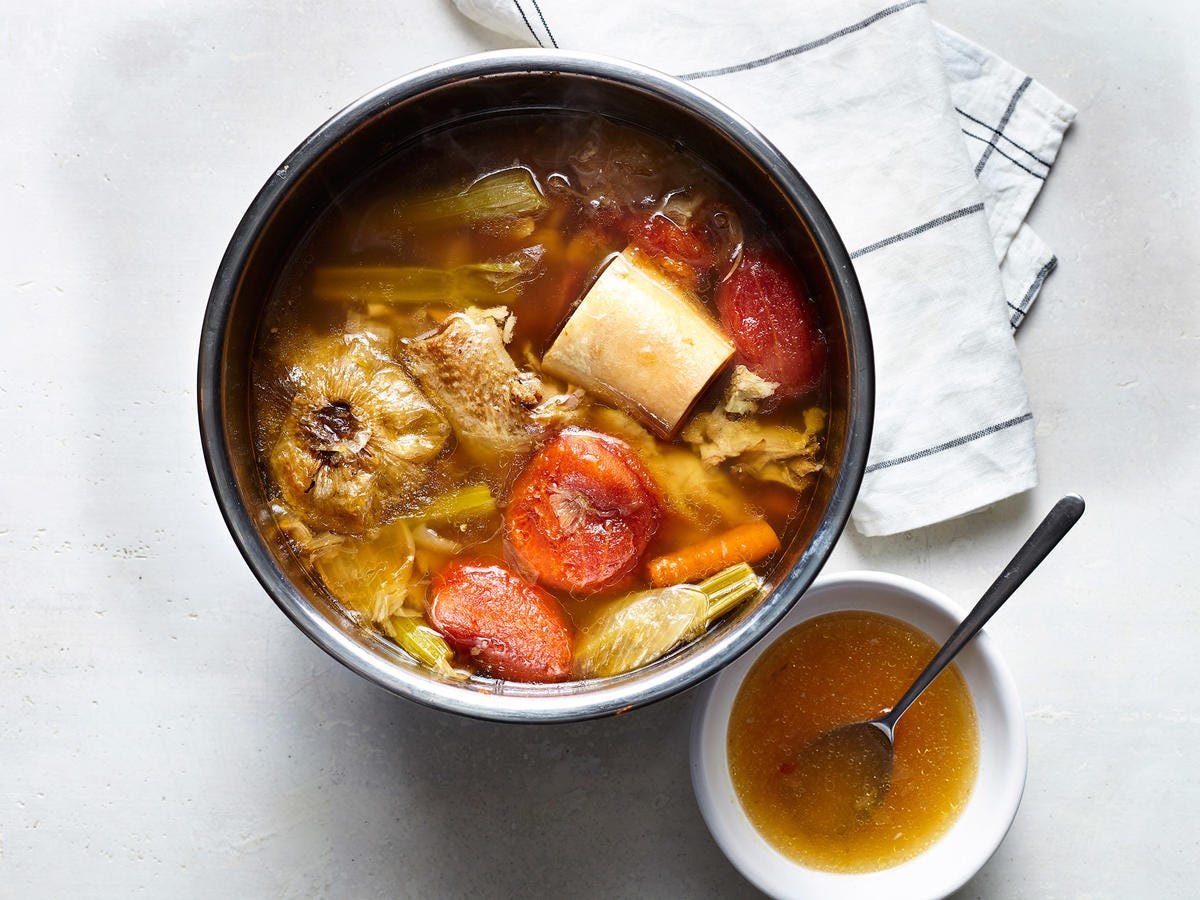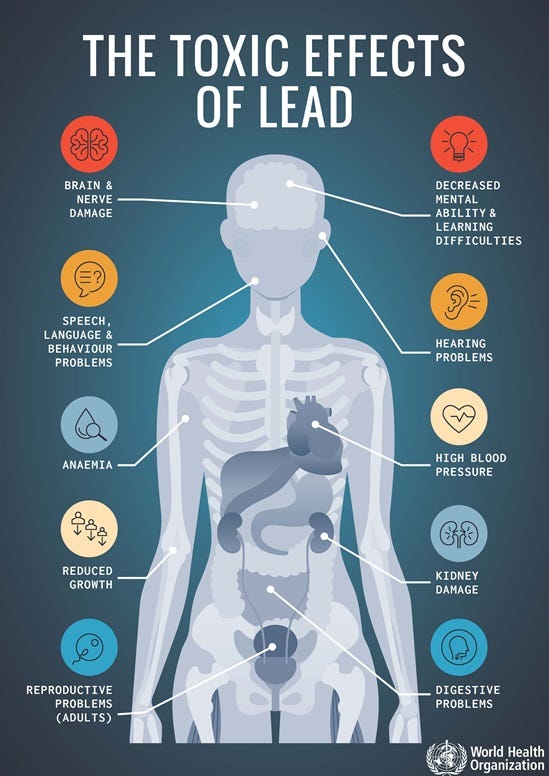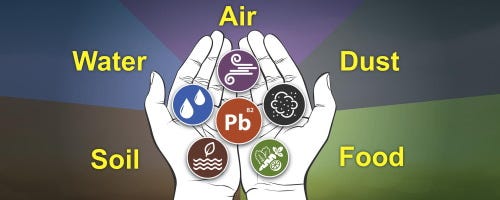
Monro and Puri (2013) stated that bone broths are becoming increasingly recommended to patients for: the gut and psychology syndrome (GAPS) diet for autism, attention-deficit hyperactivity disorder, dyslexia, dyspraxia, depression and schizophrenia, and as part of the paleolithic diet. Interestingly, the authors of this study indicated that bones tend to contain lead and boiling bones sequesters the same (Monro, & Puri, 2013).

Lead (Pb, atomic number 82, relative atomic mass 207.21) is a neurotoxin; it continues to be a significant worldwide health hazard, and is considered by most to be the number one environmental global pollutant (Monro, & Puri, 2013). Animals, and humans, acquire lead accumulation via via food, water, air, dust and soil; substances that individuals are exposed to on a daily basis. Ultimately, lead consumption has adverse affects upon the nervous system, peripheral nervous system, haemopoietic system, gastrointestinal tract, renal system, cardiovascular system, endocrine system, and reproductive system (Monro, & Puri, 2013). Such widespread and systemic affects have made lead consumption a public health concern.

The authors carried out a small pilot study whereby chicken bones, chicken meat without bones, and skin/cartilage underwent separate testing for lead concentrations. The researchers used tap water from the same source, same cooking utensils, and the same length of cooking for each test condition. A fourth test was also employed, whereby tap water was boiled devoid of chicken content, as a means of determining lead concentrations from water and its possible contribution to lead content in the chicken (Monro, & Puri, 2013).
Results indicated that chicken bone broth had lead concentrations of 7.01 μg L, chicken meat without bones had 2.3 μg L, skin and cartilage broth had 9.5 μg L, and control tap water had .89 μg L (Monro, & Puri, 2013). Such data might compel individuals to consider the implications of lead consumption. However, Monro and Puri (2013) indicated their study was very small; considerably larger studies, possibly within different geographical locations, are warranted before definiitive conclusions are made on chicken (or other animal bone) broth consumption.
References
Monro, J. A., & Puri, B. K. (2013). The risk of lead contamination in bone broth diets. Medical Hypothesis, 80(4), 389-390.
-Michael McIsaac
